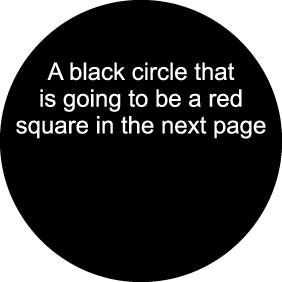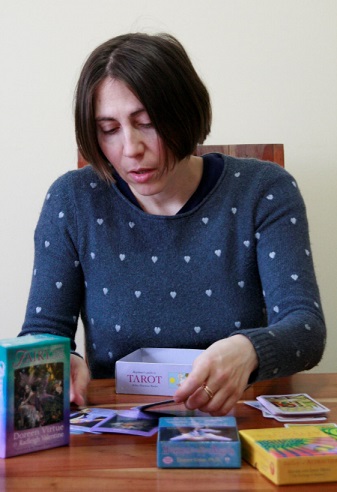
Black Circle That is Going to Be. Animation Flash Artwork. 2008. Converted to GIF animation (2019). Gil Dekel.
“What interests me is not the square or the circle, but what is in between
the two: the artistic process by which one becomes the other.” Gil Dekel.
In his life-long attempt to express universally shared feelings, painter Kazimir Malevich (Drutt, 2003) asserted that pure geometrical forms (such as circle, square, or triangle) have no specific cultural elements attached to them. With no cultural association, these pure forms can be universally comprehended regardless the cultural or ethnic origins of the viewer.
Malevich was trying to develop abstract art that reduces art to ‘zero’ (a complete abstraction), and then he tried to go beyond that zero (Drutt, 2003: 46).
The Constructivist sculptor, Naum Gabo, was likewise looking to achieve abstracted-art, but which retains the laws of nature (Bickers & Wilson, 2007: 37). Gabo’s use of abstract forms was not meant to create ‘anti-art’, a negation of form, but rather to explore forms and spaces without depicting mass. In his search for abstract spaces with no mass, no specific image was defined in his art but rather multiple possibilities existed for one to look at.
Malevich and Gabo are instrumental in the research into the creative process in which the ‘muses’ seem to inspire artists to create. In that process it seems that the muses, or collective-unconsciousness, create a ‘massless’ space that contains multitude possibilities. Artists then tap, or choose, specific aspects from the multitude to develop as art works.
In that same spirit of Gabo’s abstract spaces with no mass, I have attempted to capture the ‘space’ of artistic possibilities that contain no mass, in the work A Black Circle That is Going To Be (2008) (see above). In this work I have attempted to bind the abstract space of the creative process between two covers, like a bound book – the black circle as a front cover, and a red square as its back cover. Each cover contains text which ‘directs’ back to the other cover, focusing on the transition between the two: the artistic process by which one becomes the other.
The ‘covers’ of the creative process hold the empty space where creativity occurs. The possibilities are captured, and are bound by the artist into art (in my case, conceptual abstract graphics).
References:
Bickers, P. & Wilson, A. (Eds.) (2007) Talking Art: Interviews with Artists Since 1976. London: Ridinghouse.
Drutt, M. (2003) Kazimir Malevich: Supermatism. New York: Guggenheim Museum Publications.
© Gil Dekel.
27 July 2010. Updated 8 Jan 2019..


 - Reading with Natalie, book here...
- Reading with Natalie, book here...